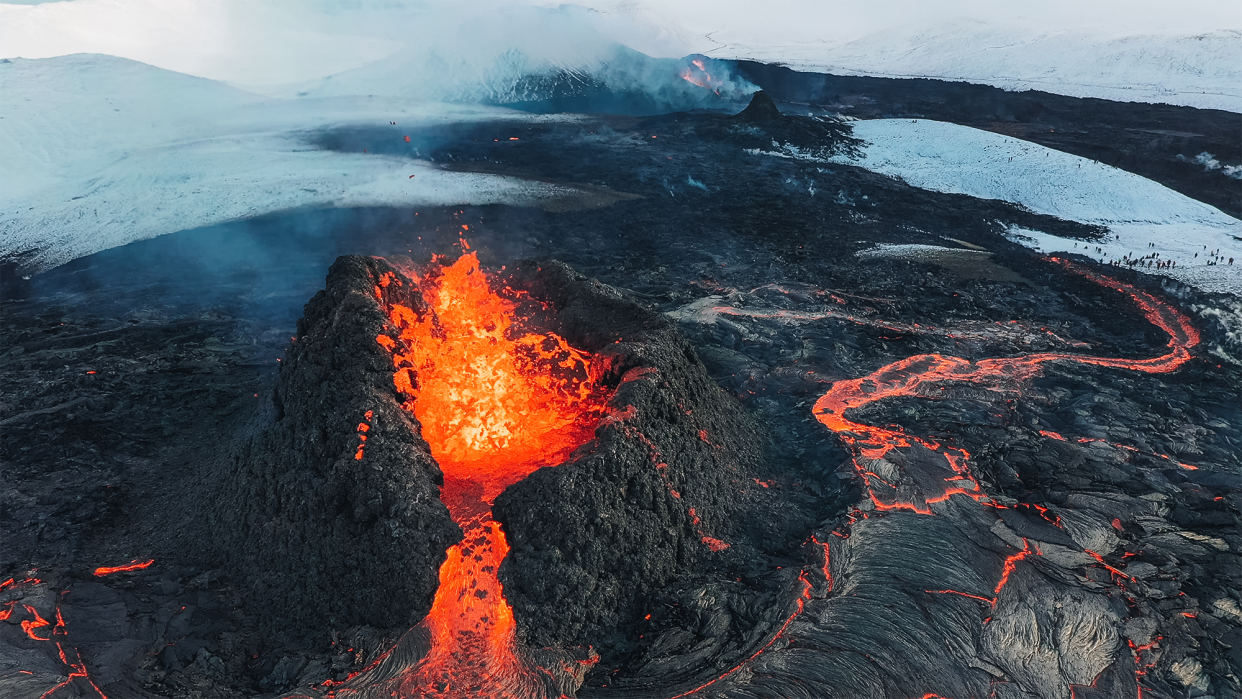'Buoyant' magma offers clues about the power of volcanoes

Studying the molten rock simmering about 12 miles below the Earth’s surface could help scientists better predict volcanic activity. According to a study published May 10 in the journal Science Advances, these underground reservoirs where rocks are first melted down into liquid magma may help forecast just how explosive an eruption may be. Better predictions of volcanic eruption could potentially save lives and give people more time to get out of danger.
Deeper magma
Predicting when an eruption might occur is still pretty difficult for scientists. Volcanoes do not exhibit the same behavior for long. Many of their eruption histories go back before humans even existed, so it is difficult to follow their eruption intervals. Eruptions are typically predicted based on the activity of the volcano and the upper few miles of the crust beneath it. This layer of crust contains molten rock that is potentially ready to erupt. However, the activity in the deeper magma reservoirs has not been as well studied.
To learn more about these magma reservoirs further underground, a team from the Imperial College London and the University of Bristol studied the frequency, composition, and size of volcanic eruptions around the world. They reviewed data on 60 of the most explosive volcanic eruptions in nine countries: Argentina, Chile, El Salvador, Indonesia, Japan, New Zealand, Nicaragua, Russia, and the United States.
[Related: A volcanologist shows what makes magma go boom.]
"We looked at volcanoes around the world and dug deeper than previous studies that focused on shallow underground chambers where magma is stored before eruptions,” study co-author and Imperial College London geoscientist Catherine Booth said in a statement. “We focused on understanding magma source reservoirs deep beneath our feet, where extreme heat melts solid rocks into magma at depths of around 10 to 20 kilometers [6.2 to 12.4 miles].”
Scientists combined this global data with advanced computer models to look closer at the composition, structure, and history of rocks deep beneath the Earth’s crust. They compared it with information gathered from active volcanoes to better understand how the magma builds up and behaves deep underground, before rising through the Earth’s crust to volcanoes.
Buoyant magma
Using this data, the researchers created computer simulations that mimic the complex processes of magma flow and storage deep within the Earth. Through these simulations, they gained new insight into a critical piece that may be driving eruptions–buoyancy.
“Contrary to previous beliefs, our study suggests that the buoyancy of the magma, rather than the proportion of solid and molten rock, is what drives eruptions,” said Booth. “Magma buoyancy is controlled by its temperature and chemical composition compared to the surrounding rock–as the magma accumulates its composition changes to make it less dense, making it more ‘buoyant’ and enabling it to rise.”
When the magma becomes buoyant enough to float, it rises up and creates fractures in the solid rock on top. It then furiously flows through these fractures, causing an eruption.
Magma behavior
In addition to identifying magma buoyancy as an important factor driving volcanic eruptions, the team also looked at how the magma behaves when it reaches more shallow underground chambers just before erupting. According to the team, if the magma is stored here longer, it leads to smaller eruptions.
[Related: Volcano on island in the Galapagos spews lava into the sea.]
Larger reservoirs may be expected to fuel bigger and more explosive eruptions, but the study found that these large reservoirs disperse more heat. This dispersal slows down the process of melting solid rocks into liquid magma. The team believes that the size of the reservoirs is another key to more accurately predicting how big an eruption will be.
The study also found that eruptions are rarely isolated. Instead, they are part of a repetitive cycle of activity. The magma released by the volcanoes that they studied was also high in silica. This natural compound is known to play a part in determining how viscous–or sticky–and explosive magma is. High-silica magma tends to be more viscous, resulting in a more intense eruption.
“By improving our understanding of the processes behind volcanic activity and providing models that shed light on the factors controlling eruptions, our study is a crucial step towards better monitoring and forecasting of these powerful geological events,” study co-author and Imperial College London geologist Matt Jackson said in a statement.
Using magma to make better predictions
According to the team, some of the study's limitations include that their model focused on how magma flows upwards. The source reservoirs in their model also only had molten rock and crystals.
“However, there is evidence that other fluids such as water and carbon dioxide are also found in these source reservoirs, and that magma can swirl and flow sideways,” said Jackson.
In future studies, the team would like to refine these models by incorporating three-dimensional magma flow and accounting for different fluid compositions. They hope that this will ultimately allow scientists to predict volcanic eruptions more accurately and better prepare for future natural disasters.

